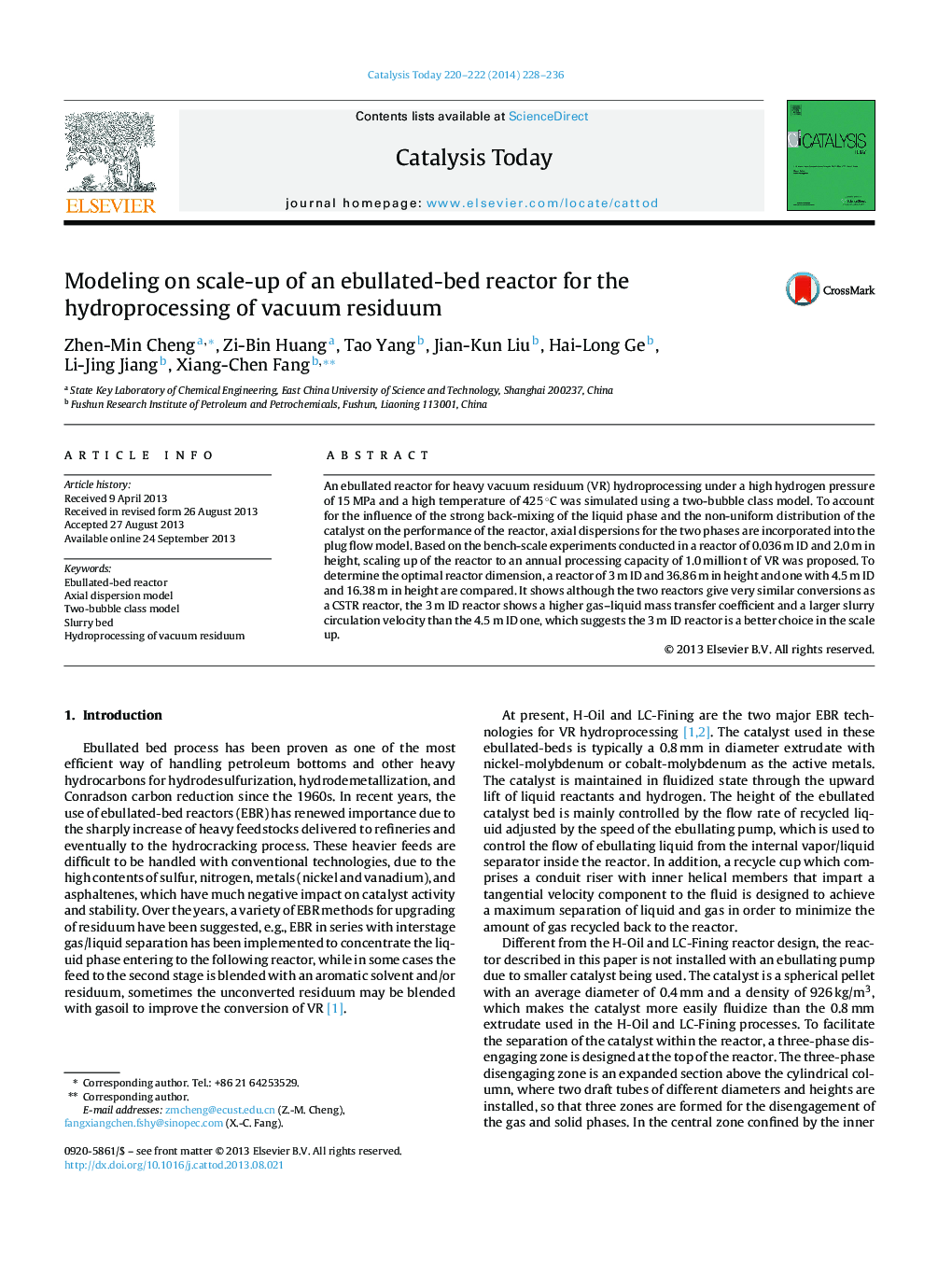| Article ID | Journal | Published Year | Pages | File Type |
|---|---|---|---|---|
| 54406 | Catalysis Today | 2014 | 9 Pages |
•Two-bubble class model was employed for the gas–liquid mass transfer.•Axial dispersions of liquid and solid phases are incorporated in above model.•Bench-scale experiment was carried out in a 2 L stainless steel tube of 2 m long.•Scale-up simulations at a capacity of 1.0 Mt/a for VR processing were conducted.•Due to the non-uniform distribution of catalyst, axial dispersion model is required.
An ebullated reactor for heavy vacuum residuum (VR) hydroprocessing under a high hydrogen pressure of 15 MPa and a high temperature of 425 °C was simulated using a two-bubble class model. To account for the influence of the strong back-mixing of the liquid phase and the non-uniform distribution of the catalyst on the performance of the reactor, axial dispersions for the two phases are incorporated into the plug flow model. Based on the bench-scale experiments conducted in a reactor of 0.036 m ID and 2.0 m in height, scaling up of the reactor to an annual processing capacity of 1.0 million t of VR was proposed. To determine the optimal reactor dimension, a reactor of 3 m ID and 36.86 m in height and one with 4.5 m ID and 16.38 m in height are compared. It shows although the two reactors give very similar conversions as a CSTR reactor, the 3 m ID reactor shows a higher gas–liquid mass transfer coefficient and a larger slurry circulation velocity than the 4.5 m ID one, which suggests the 3 m ID reactor is a better choice in the scale up.
